It was September 2011 when I took a seat at the chef's table at Amuse, the restaurant inside the Essex Resort & Spa. The long counter was mostly empty, and the chef de partie seemed relaxed as he set down each course: velvety, seared sweetbreads dusted with hazelnuts; peppery watercress soup; seared scallops over ratatouille.
This was my first taste of the food of Jean-Luc Matecat, who was clearly very talented. It was to be the last, too, at least for a while. Matecat left Amuse and became hard to track, despite occasional reappearances — as the chef at Winooski's Mule Bar, or a cook at Burlington's Pistou. In between, I later learned, he had a short stint at the North Hero House, among other jobs.
This winter, when chef Jason Tostrup announced he was leaving the Inn at Weathersfield, the Perkinsville inn's owners cast a wide net for a replacement. During tryouts, Matecat swept in with roasted beets and fresh ricotta, as well as braised elk shank over cavatelli. His creations wooed owners Marilee and Richard Spanjian, who chose Matecat from a field of 80 applicants.
Born and raised in Vermont, Matecat got an early start in the kitchen, washing dishes and making salads at Warren's Common Man Restaurant. His dad, Patrick Matecat, was the chef there and an instructor at the New England Culinary Institute. Despite his pedigree, the younger Matecat did not automatically choose a culinary career. After graduating from Harwood Union High School in Moretown, he headed to Aptos, Calif., and enrolled in Cabrillo College as an English major. He finished with a culinary degree.
Matecat spent the next nine summers on Nantucket cooking for Seth and Angela Raynor at the Pearl Restaurant; in the off seasons, he headed to Boston restaurants such as Clio and No. 9 Park.
Along the way, Matecat began to marry the classic techniques he'd learned from his father with a love of modern innovations such as sous-vide cooking. At the Weathersfield, he's used both old and new methods with the local ingredients for which the inn is known. During a recent visit, I devoured incredible fried Misty Knoll chicken thighs, which Matecat had "sous-vided" before coating them in a batter spiked with Korean black pepper.
I caught up with the chef last week, just before his Wednesday night service.
SEVEN DAYS: How and what did your family eat when you were growing up?
JEAN-LUC MATECAT: We had a big emphasis on family meals and togetherness. We did a lot of gardening together, and family dinner was extremely important. I had to make the salads, make the vinaigrettes, help take care of the garden. My dad came [to the U.S.] from France after World War II, when ingredients were scarce and people stretched product, so that's how I first learned to utilize food. We ate lots of country French food, lots of fish, lots of game. My dad really likes birds, and so do I.
SD: Were there any foods you hated as a kid?
JLM: I didn't like dill, and I didn't like lemongrass. I don't know why. Now I love lemongrass, but I still don't like dill. It's just not my cup of tea.
SD: When did you decide you wanted to be a chef?
JLM: I had worked for my dad while growing up, doing dishes and making salads. When I started college, I needed to pay bills, so I started cooking in a restaurant. Eventually I switched my major. After my first summer in Nantucket was when I really decided I wanted to be a chef.
SD: Who has influenced you the most as a chef?
JLM: My father taught me a lot about my philosophy about food, about using just fresh, lean ingredients. He's a really talented cook, but he always warned me not to be a chef because it's a tough, very demanding career.
So my father supplied the philosophy, the classic techniques and the classic dishes. Angela and Seth Raynor were the people who mentored me, shared their philosophy with me, and gave me my style, attention to detail and modern twist on food. The funny story is that they were favorite students of my father's [at NECI], and they actually babysat me as a kid.
SD: How would you describe your style?
JLM: Classic building blocks with a modern presentation and twist. My food is really grounded in an old-school style. I adhere to my father's techniques and recipes, and I like fundamental vinaigrettes. But [cooking] is a much different game than it was in 1970. We're all a lot more privileged, and I like modern techniques. Still, I can't think of anything I like more than [my father's] roast chicken, which is one of the simplest dishes.
SD: What's the most important advice you can offer about roasting a chicken?
JLM: Be sure to truss your chicken. That's the key to having it cook evenly.
SD: What foods and ingredients are always in your pantry?
JLM: Tons of rice, lots of curry. I eat a lot of Southeast Asian [food] at home, and eat a lot of vegetables and fruit. [At the Inn] we keep some funny Asian things in the back, plus a wide variety of vinegars. I love my vinegars. We rely heavily on fresh herbs and lots of pickles. We pickle anything and everything.
SD: If you were trying to impress someone with your cooking, what would you make?
JLM: Guinea hen from Cavendish Game Birds [of Vermont] has been one of my favorite things lately. They're incredible birds. I confit the legs in duck fat, with lots of herbs and garlic; then we very gently cook the breast, whether it's by sous-vide or by poaching in a vinegar broth.
SD: What's the most off-the-wall dish you've ever tried?
JLM: Rotten tofu. [Laughs.] Uh, fermented tofu. Steve Bogart [former chef-owner of A Single Pebble] took me to Montréal and ordered it for me. I gave it three tries, but it was too much for me. It was absolutely horrible. Also, durian fruit from Thailand. If it's in its spiky case it's OK, but when it's open, the meat smells like a combination of bananas and rotten onions.
SD: If you could travel to any country to eat for a week, which one would it be?
JLM: I still have to get to Spain. It's long overdue.
SD: What piece of kitchen gear can you not live without?
JLM: This is not very original, but my MAC chef's knife.
SD: What's the most memorable meal you've ever had?
JLM: It's hard to narrow it down, but the meal that comes to mind is the "thank you" meal at Clio, the winter that I worked there. It was 13 courses. [Clio] was the first place I was exposed to modern cooking, to immersion circulators and Freon. I expected to be disappointed. Now, I can't say enough how great it is to control temperature and consistency [with an immersion circulator].
SD: Do you have a favorite cookbook?
JLM: In the last year, maybe the Eleven Madison Park cookbook.
SD: Where do you like to eat, in Vermont and elsewhere?
JLM: Clio, Coppa, Craigie on Main [all in Boston]. Hen of the Wood in Burlington, and Pistou. I also eat religiously at Pho Dang [Vietnamese Café]. It's at the end of my street [in Winooski], and it's been my fast food for the last three years. I also really, really love the Royal Orchid [Thai Restaurant] in Montpelier. It's been my family's go-to for the last 10 years. It's great food. It reminds me of the food in Thailand.
SD: What do you listen to when you cook?
JLM: Anything and everything, depending on the day. The majority of the time it's underground hip-hop [Atmosphere and Brother Ali]; a close second is classic rock.
SD: Do you have a favorite beverage?
JLM: Pompelmo soda from San Pellegrino.
SD: You've cooked in a few very rural places, including the North Hero House and the Inn at Weathersfield. What's the biggest challenge of cooking in this kind of environment? What's the biggest reward?
JLM: The biggest rewards are the break times you get to enjoy in these seasonal places; the biggest challenge is staying focused during the slow periods. When it's really slow, it's hard to stay focused and aggressive on your cooking. But I also try to remember those are your times to catch up and get everything in order for when it gets busy.
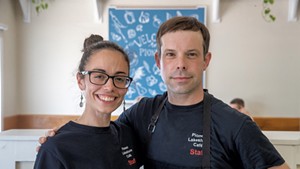
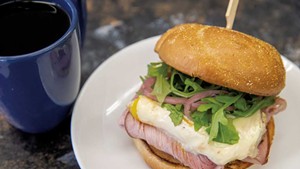
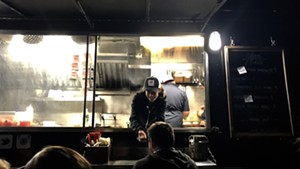
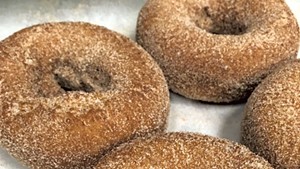
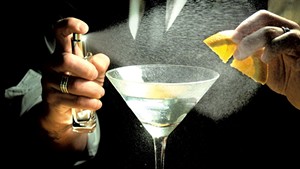









Comments
Comments are closed.
From 2014-2020, Seven Days allowed readers to comment on all stories posted on our website. While we've appreciated the suggestions and insights, right now Seven Days is prioritizing our core mission — producing high-quality, responsible local journalism — over moderating online debates between readers.
To criticize, correct or praise our reporting, please send us a letter to the editor or send us a tip. We’ll check it out and report the results.
Online comments may return when we have better tech tools for managing them. Thanks for reading.